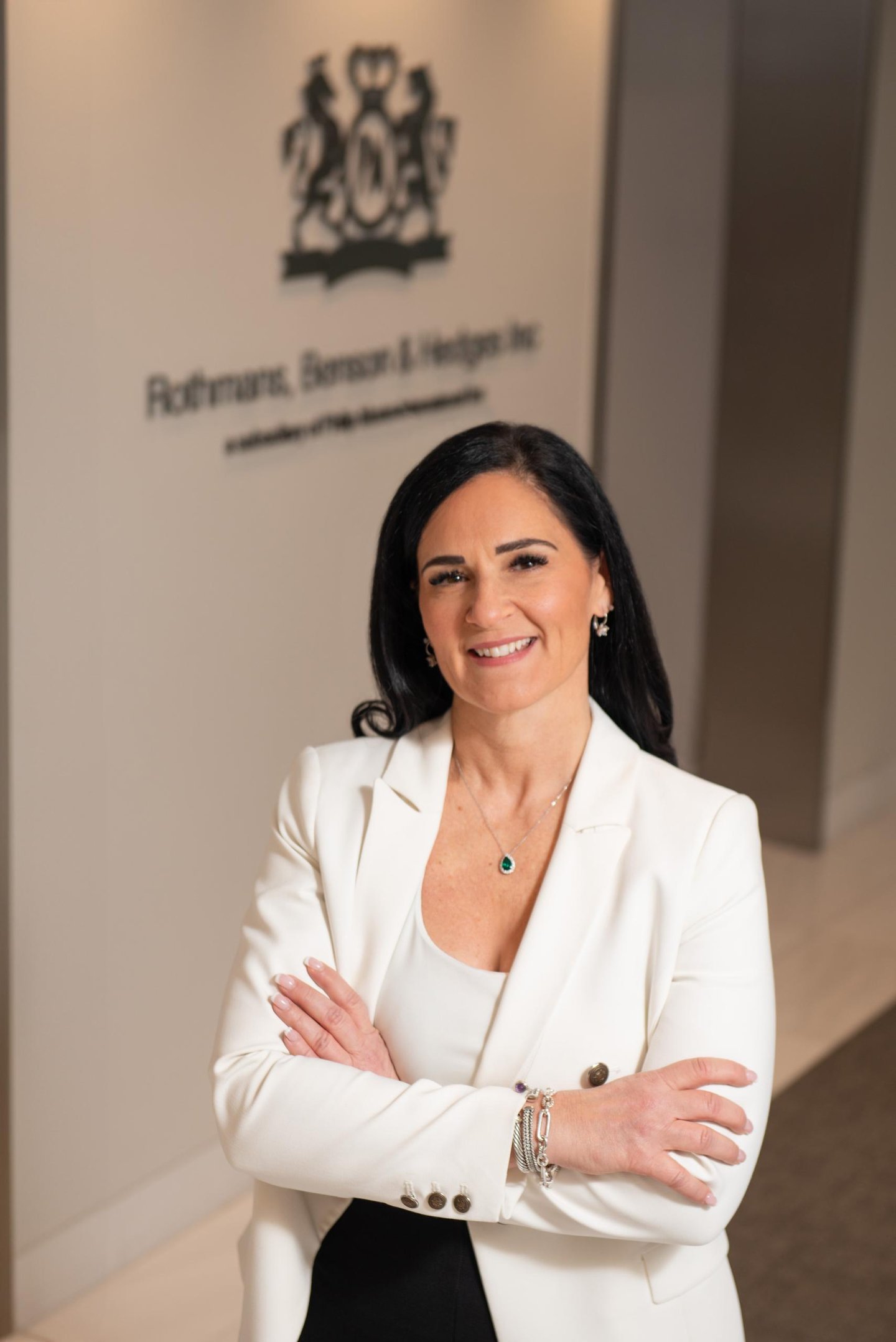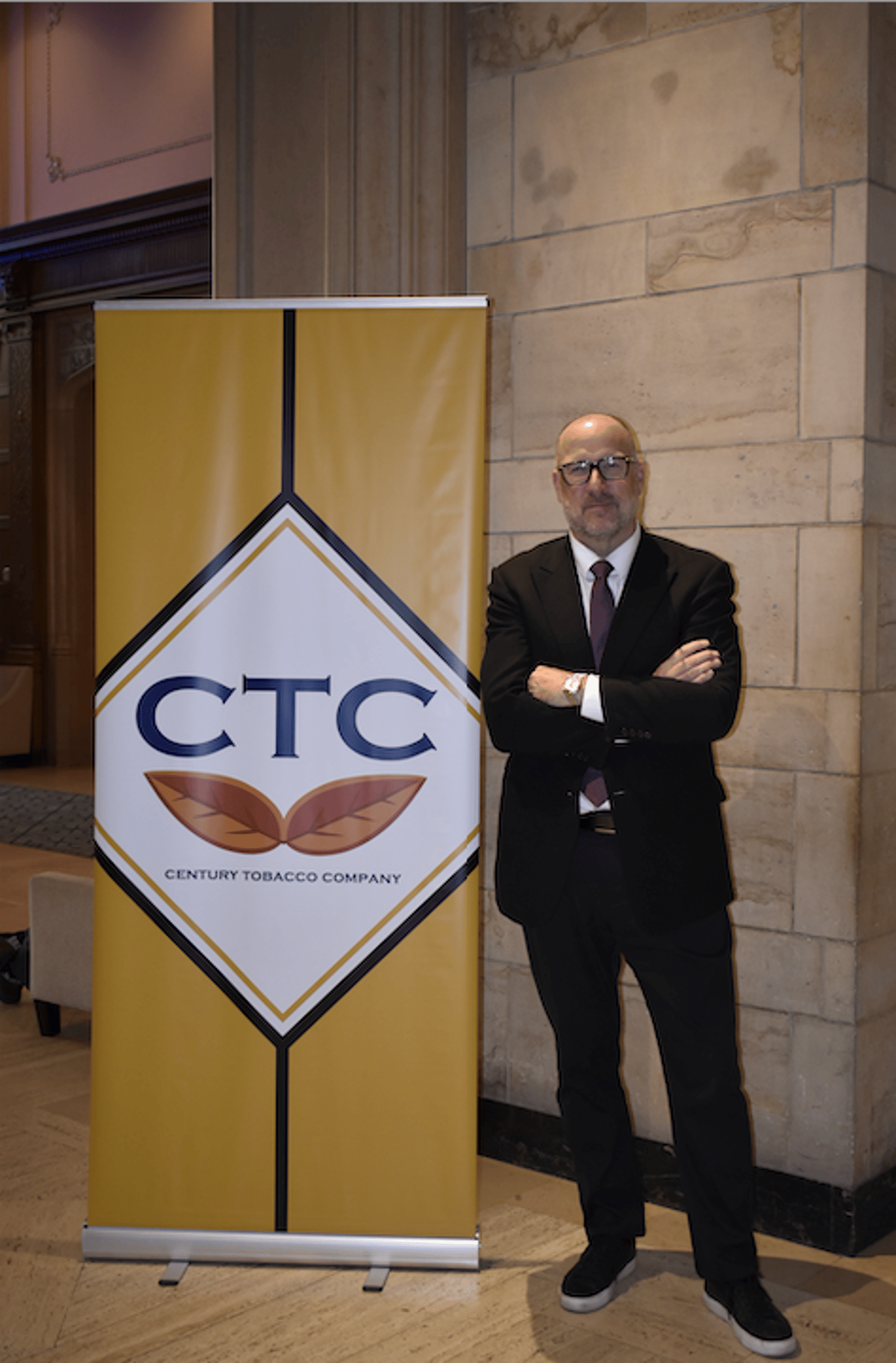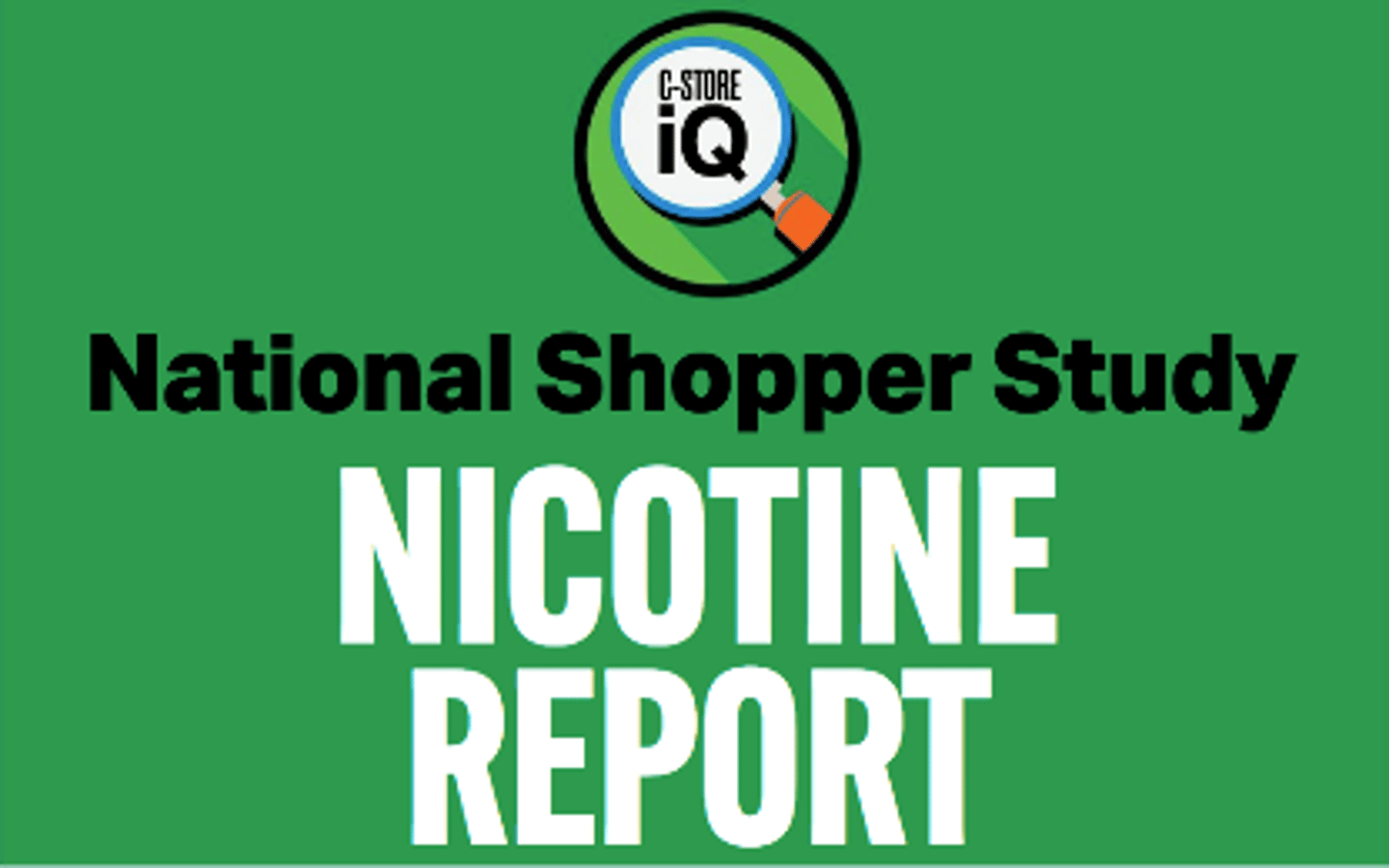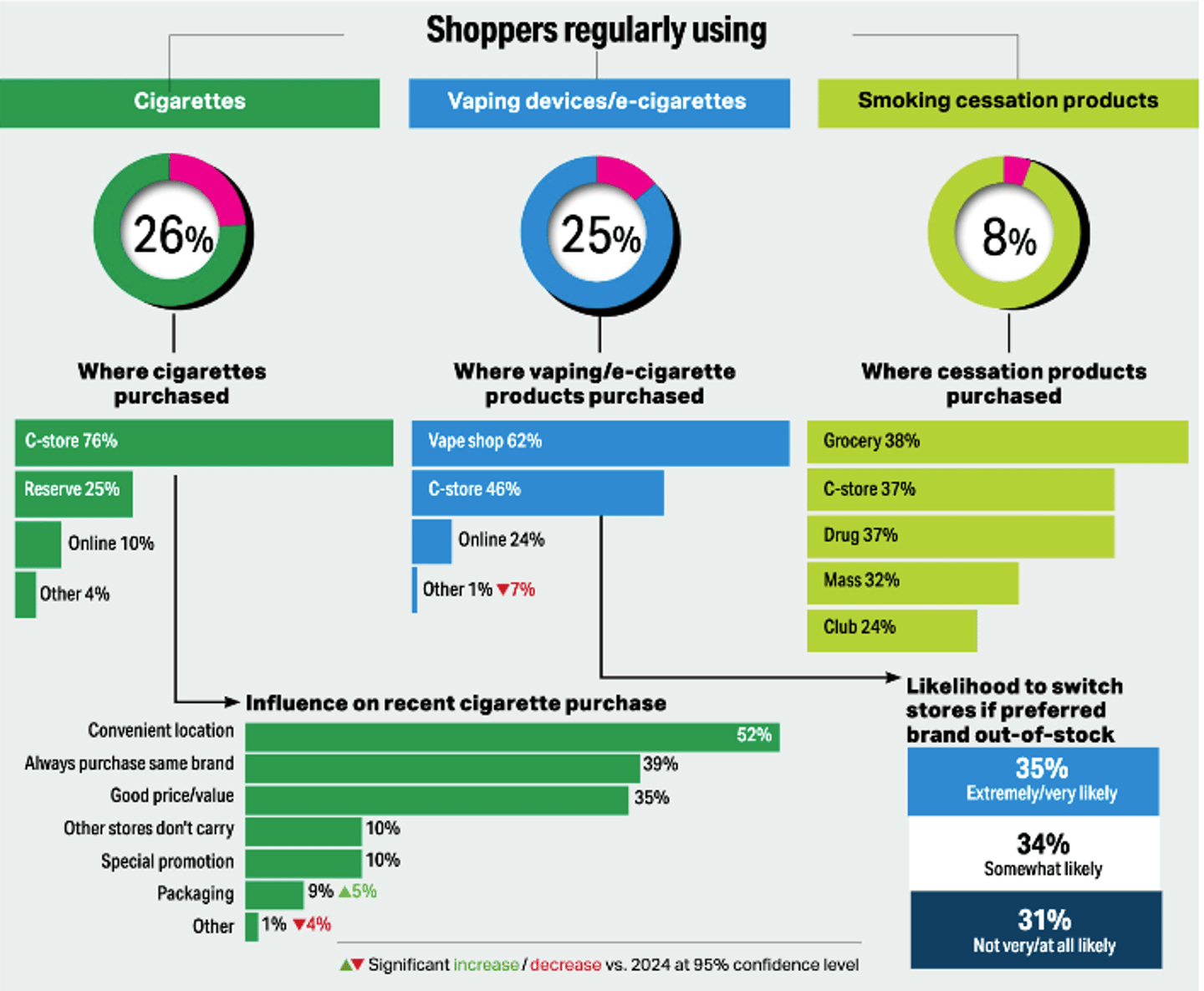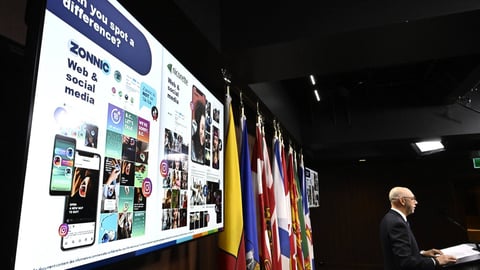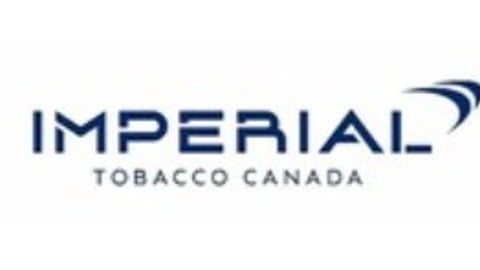A wild ride: 2025 Tobacco + Vaping Report
If you were to describe the tobacco and vaping category in c-stores over the past 18 months, a wild roller coaster ride would about sum it up. Cigarette sales are in free fall; nicotine pouches were abruptly pulled from c-stores; and sales of other smoke-free alternatives—like vapours and nicotine-releasing gum—continued their steady climb.
Cigarettes—still the sector’s top-selling category in store—generated $3.85 billion in sales in 2023, down from $3.96 billion in 2022, according to an EY Canada study commissioned by the Convenience Industry Council of Canada (CICC). That is a drop of 2.7% in dollar sales and represents an almost 10% drop in unit sales. The decline is even more precipitous when compared to 2019, when cigarettes generated nearly $4.5 billion in sales for c-stores.
That would be all well and good if Canadians were, in fact, kicking the habit en masse, but that’s not the story. In 2023, organized crime raked in almost $1.3 billion from cigarette sales.
“Contraband tobacco is eight times more profitable than the illicit drug trade,” explains Jeff Brownlee, vice-president of comms and stakeholder relations at the CICC, of the astounding size and growth of the black market. Fortunately, efforts have appeared to ramp up to combat it. “Over the past 12 months, law enforcement agencies across the country have made some progress in stemming the flow of contraband tobacco, as is highlighted with the growing number of busts and seizures,” says Brownlee. “It’s encouraging.” (See 'Contraband Update' sidebar below).
READ: CICC releases new study on contraband tobacco in Canada
There are other reasons to feel bullish about this age-restricted category, particularly the continued growth of smoking alternatives, given Canada has set a target of reducing smoking rates to less than 5% of the population by 2035. Smoking alternatives saw revenues in c-stores rise to $216.7 million in 2023, a year-over-year increase of 2.8%.
Players like Sesh Products Canada enjoyed wider distribution across the channel (See 'Going smoke-free' sidebar below), while legacy tobacco giants have been successful in shifting some customers to smoke-free products.
“Globally as well as in Canada, we've seen a huge consumer shift to a number of products outside combustible cigarettes, including heated tobacco,” says Milena Trentadue, managing director at RBH Canada, which manufactures electronic smoke-free devices that eliminate combustion by heating tobacco instead of burning it. An example is its bladeless Smartcore Induction System launched in 2023. “Nearly 40% of our global revenue now comes from smokeless products, and for the first time ever sales exceed that of our number-one-selling cigarette brand globally. And so, we’re definitely on the road to meeting our ambitions of helping realize a smoke-free future for all Canadians.”
Trentadue says Canada can become a global leader in reducing harm caused by smoking, but “it requires actionable steps in creating policies that differentiate between smoke-free products and cigarettes. There are opportunities especially when it comes to taxation, to tax according to the health risks associated by product type. And I think government and industry need to better leverage educational awareness campaigns, to help bring light to the fact that these products are available.”
However, the category was dealt a blow when nicotine pouches were banned from gas and convenience stores in August 2024, restricted to sale only behind pharmacy counters.
The only pouch on the market is Imperial Tobacco Canada’s Zonnic, which launched in 2023 after the product was approved by Health Canada as an aid to quit smoking.
“We strongly believe that innovative products like Zonnic play a key role in helping people quit smoking. Limiting its sale to pharmacies makes it harder for smokers to access it and unfairly impacts responsible retailers,” says Michael Bonelli, vice-president, sales and trade marketing at Imperial Tobacco Canada, which had launched a public awareness campaign, the Zonnic Truth Campaign, to address misinformation circulating about the product.
“We’ve been continuing our engagement with Health Canada,” he says. “We remain hopeful that the government will lift the restriction and allow Zonnic to be sold where cigarettes are available.”
Alimentation Couche-Tard and Parkland Corp. have filed applications in federal court that Health Canada’s restriction on nicotine pouches is unfair and serves only to increase demand for illegal products.
READ: Alimentation Couche-Tard, Parkland challenge Health Canada nicotine pouch rules
Like Trentadue, Bonelli says cigarettes and smoke-free products shouldn’t be grouped together. “Misinformation is the biggest obstacle to progress in reducing the harm caused by tobacco,” he explains. “Many Canadians don’t know that vaping and other smokeless nicotine products are much less harmful than smoking. Decision makers, health groups and the industry need to work together and rethink how nicotine products are regulated if we are serious about reducing smoking incidence in Canada.”
The cigarette category, meanwhile, has a relatively new “super value” player making waves—Century Tobacco Company (CTC). Founded in 2019 by entrepreneur Richard Edelstein as CEO, the family-based enterprise benefits from his background in manufacturing and distribution, including packaging solutions and food and beverage equipment. From a 30,000-sq.-ft. manufacturing facility in Summerstown, Ont., CTC produces competitively priced premium tobacco products under the brands Platinum Rally, Darts, Santa Fe and its latest addition Bravo 1, introduced in December.
“We’re selling thousands of cartons a day,” says Steven Bouchard, CTC’s national sales and marketing director. He joined the company in May 2024, bringing 25 years of experience with retail food wholesaler, Distribution Regitan, and a previous role in sales with Coca-Cola. “We’re growing our brand in every province.”
After years of struggling to gain traction, Edelstein says they’ve built a strong reputation through word of mouth with independent retailers, while also securing partnerships with major chains. “While traditional advertising isn’t a legal option for us due to Health Canada regulations, our competitive price point and high quality give stores a strong incentive to promote our product to their customers.”
As the big tobacco companies move toward smoke-free alternatives, Edelstein says, “We’ve got new brands coming out this year, appealing to both traditional and new smokers, so that we capture our fair share of the six million cartons of cigarettes sold in Canada every month.” Bouchard, whose grandfather worked in the tobacco industry, adds, “We’re proud to be a tobacco manufacturer and to sell it responsibly through the proper channels."
Going smoke-free
While c-stores serve as a trusted channel for the legal and age-regulated purchase of cigarettes, they also have a role, if not responsibility, to offer products that support consumers in their efforts to quit or reduce smoking combustible cigarettes.
By taking this approach, c-stores can support Health Canada's goal of achieving a smoke-free Canada by 2035, while capitalizing on a growing, less-regulated category. This category includes nicotine replacement therapy (NRT) products in the form of chewing gum, as well as vaping products.
Launched as an NRT across Canada in April 2022, Sesh+ is a chewing gum that releases a controlled dose of nicotine without the tar or carbon monoxide of cigarette smoke. It comes in the flavours cinnamon, pomegranate, wintergreen, and, as of December 2024, citrus.
Lifetime revenues of Sesh+ products in Canada exceeds well over $1 million. “We’ve seen notable growth in sales and revenue within our category,” says Shawhin Kanai, director of sales at Vancouver-based Sesh+ Products Canada, whose employees, he notes, are former smokers and vapers. “However, what’s even more significant to me is the increasing awareness around harm reduction alternatives. This shift is helping adult tobacco users discover new options through emerging channels, particularly in convenience stores and gas stations.”
In c-stores, Sesh+ started in Circle K, which now carries the brand in all Ontario locations, and MacEwan/Quickie, where it’s sold in 87 stores outside Quebec. At Shell, its first gas retail partner, Sesh+ is available in over 490 locations nationwide. “Over the last 24 months, we've expanded with other key partners, such as 7-Eleven, Parkland, Petro-Canada, BG Fuels and Canco,” says Kanai. “We are currently in over 4,000 distribution points throughout Canada and continue to grow.”
Sesh+’s revenue growth and brand awareness “is closely linked to our distribution growth,” he explains. “As we expand, adult tobacco consumers are more likely to encounter our brand where they typically shop, creating more opportunities for them to make that purchase decision. By positioning our products strategically, we provide consumers with an opportunity to make a positive, informed choice—one that can genuinely impact their lives. Maintaining an open dialogue with our retailers and supporting initiatives that promote this positive change helps deliver a clear message.”
A key part of Sesh Products’ mission statement is “to help Canada become the first smoke-free country in North America.” To that end, it is set to launch in the fourth quarter the Sesh+ Plus App, a virtual cessation support tool for tracking nicotine and featuring personalized content.
Sesh+ can be openly displayed at c-store counters. There is the risk, however, that nicotine gums could face the same federal restrictions slapped last August on nicotine pouches, such as Zonnic, which were banned from c-stores and gas stations, limiting their availability to pharmacies. However, Kanai is hopeful regulators are coming around to understanding the role smoke-free products play.
READ: Industry reacts as Health Canada bans convenience stores from selling nicotine pouches
“Overall, the reaction [we’ve had] from provincial and regulatory bodies has been one of cautious optimism, as they recognize the potential health benefits of providing smokers with safer alternatives,” he says. “While there are always challenges, especially around how these products are positioned in the market, we’re committed to transparent communication and collaboration with regulatory bodies to help shape a framework that supports both consumer health and public safety.”
While some companies are establishing their foothold in the convenience channel, others are making a comeback. Once a Silicon Valley start-up valued at US$38 billion, e-cigarette maker Juul Labs almost went bankrupt in 2022 after settling lawsuits with dozens of U.S. states over marketing its product to youth.
The Canadian operations did not deploy those tactics, but in 2020 began to phase out the sale of flavoured vaping pods potentially enticing to minors like mango and vanilla, focusing only on menthol and tobacco which can be sold behind the counter at c-stores.
FACT: Canada has a complex landscape of provincial vaping regulations for C&G sales. In provinces such as British Columbia and Quebec, flavour is restricted to tobacco, whereas in Ontario, mint and menthol flavours are also permitted for sale. In Alberta, there are no flavour restrictions. (Flavoured vapour products can only be sold in specialty vape stores or licensed cannabis retail establishments.)
After several low-key years, the brand is amid a resurgence.
“I’m optimistic about the steps we’ve taken to re-establish our presence in this market and earn the trust of key stakeholders and customers in Canada, who have historically chosen our products to move away from cigarettes,” says Juan Alonso, former head of national accounts, who was appointed interim president in 2023. “As Juul Labs Canada moves forward, we continue to focus on combating underage use whilst innovating the best product technology to support adult smokers as they move away from cigarettes.”
To reestablish the brand, Alonso says they “have continued to make substantial investments in robust regulatory science and in our product pipeline—with the launch of Juul2 –to advance our mission of transitioning Canada’s smokers away from cigarettes. We have also recruited to strengthen our experienced senior leadership team.”
Also, Juul Labs Canada vocally supports Tobacco 21, a campaign to raise the minimum purchase age of tobacco and vaping products to 21. Prince Edward Island is the only jurisdiction in Canada that has passed such legislation, increasing the minimum age from 19 to 21, in 2020.
The company also remains committed to the c-store channel. “C&G records the highest annual sales in the category, and its role in an omni-channel model is, and always will be, critical,” says Alonso, adding that key retail partners include Circle K, Shell and Rabba Fine Foods. “It’s essential that we are able to reach smokers in these stores to provide them with alternatives that will help them move away from cigarettes.”
While Canada presents unique challenges considering the varied and sometimes inconsistent regulation between provinces and the federal government, Alonso adds, “We believe e-cigarette regulation should be designed to reflect the risks and potential benefits of the category. E-cigarettes are not risk-free, and they contain nicotine which is addictive. But they can serve as a valuable tool to help adult smokers move away from cigarettes.”
Contraband update: Light at the end of the tunnel
Leaders at Rothmans, Benson & Hedges, JTI-Macdonald Corp. and the Convenience Industry Council of Canada (CICC) are for the first time in a long time feeling optimistic about curbing the runaway popularity of contraband tobacco. They cite plans for increased enforcement, as well as growing public awareness of the societal dangers associated with a thriving illegal tobacco market (think gangs and organized crime). They even see a future where c-stores reclaim some of their cigarette market share lost to contraband.
With the ongoing backdrop of U.S. President Donald Trump threatening a 25% tariff on imports from Canada, potentially igniting a trade war between the two countries, Ontario unveiled a plan on Jan. 14 to strengthen security at the Canada-U.S. border. The plan includes the introduction of “increased permanent funding” for enhanced tools—like AI—to help law enforcement “stem the cross-border flow of illegal guns, contraband tobacco and illegal drugs.”
According to the Canada Border Services Agency, between Jan. 1 and Oct. 31, 2024, more than 1.7 million kilograms of illegal tobacco were seized at ports of entry in southern Ontario. That’s equivalent to 116, 53-ft. tractor trailer loads full of tobacco. “And that’s just the tip of the iceberg, as that number is estimated to account for only 20% of the total contraband tobacco that flows from the U.S. into Canada,” notes Jeff Brownlee, VP of comms and stakeholder relations, at the CICC. “This demonstrates that the Americans are fuelling the illegal manufacturing of cigarettes in Canada, which is why the province’s multi-jurisdictional approach is necessary.”
“It’s a positive sign that the Ontario government has begun to recognize the significance of the contraband problem, not only in terms of community safety but also as a border security issue, too,” says Milena Trentadue, managing director at RBH Canada. “More can be done, but it’s a positive step in the right direction.”
On its online trade portal, RBH features contraband education forums. “Hopefully, c-store owners are inspired by the forums to communicate to their own customers as much as possible about the community safety issues of contraband,” she says. “Being an election year, we’re also encouraging the small business owners impacted by the lack of enforcement against contraband to contact their elected official or candidate and voice their concerns.”
In January, RBH advocated before the Legislative Assembly of Ontario's Standing Committee on Finance and Economic Affairs that the province’s 2025 budget include a ban on the promotion of contraband tobacco being sold online and funding for a campaign aimed at educating smokers of organized crime’s role in illegal tobacco sales.
Last spring, JTI-Macdonald launched its own campaign—Know What You’re Buying?—aimed at educating adult smokers in Ontario, “the epicenter of the illegal trade problem,” says Elaine McKay, director of corporate affairs and communications, JTI-Macdonald Corp. “Between one in three and one in two cigarettes smoked in Ontario are illegal. But a lot of consumers really don’t know that cigarettes without a tax stamp or in plain packaging are illegal.”
JTI’s messaging is clear: “When you buy illegal tobacco, you’re funding guns, gangs, and human trafficking. When you buy tobacco at a convenience store, you’re funding roads, bridges, and local projects.” Social media ads with these headlines performed very well, helping the campaign reach three million Ontarians, says McKay. It generated over 128,000 visits to the Know What You’re Buying website, with about 100 visitors clicking a button on the site to email a letter to their local MPP.
In addition, 4,000 postcards with a QR code linking to the website were distributed by JTI-Macdonald to trade partners.
Its campaign also served as market research intelligence, with user comments from the Facebook and Instagram ads shedding light on why some smokers knowingly buy illegal cigarettes. “They fell into two groups. There were those who justify it by saying, ‘We need to take one back from government by not paying the tax,’ and so they think they’re punishing the government,” says McKay, adding another group said they’re buying on a reserve to support Indigenous communities.
“And so those are two things we’re struggling with at the moment,” she says. “But the fight against cheap illegal tobacco is not a fight for a legal industry alone, but for us all, in everything associated with it, like organized crime.”
Three-in-four cigarette users regularly purchase from a convenience store, citing location as the primary influence followed by brand loyalty and price. That’s largely on par with last year’s data, according to new data and insights from the 2025 C-store IQ: National Shopper Study, which surveyed more than 2,000 convenience and gas customers.
Of those surveyed, 15% say they purchase vaping/e-cigarettes, however data varies widely by demographic, with younger shopping driving purchases:: Gen Z (22%), millennials (21%), gen X (10%) and boomers (5%).
The data of cigarettes reveals a different pattern, with males (30%) more likely to smoke than females (22%). In addition, the oldest and youngest co-horts are less likely to light up: Gen Z (20%) and boomers (24%) vs. millennials (27%) and gen X (30%).
While the majority of vape and e-cigarette users purchase products at a vape shop, nearly half buy at c-stores and the number of people citing “other” declined significantly this year (perhaps a reflection of the industry’s education and advocacy around contraband). On the smoking cessation front, those who use these products are divided in their preferred purchase locations, with similar proportions favouring grocery, convenience and drug stores.
Who’s using smoking cessation products:: Males (10%) vs. females (6%); gen Z (13%) and millennials (10%) vs. gen X (5%) and boomers (3%).



